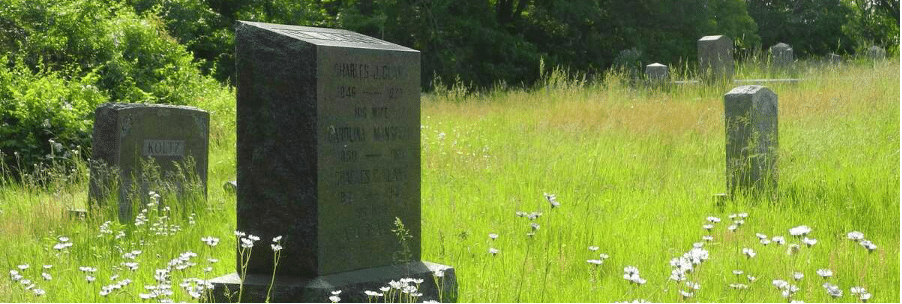A few thoughts on mowing

Eventually, everyone can put the lawn mower away.
When I was a teenager, I briefly had a job at a very popular place. I mowed in a cemetery. How popular was it? People were dying to get in. Bada boom! It was actually kind of relaxing and peaceful. But I did have to pay attention as there were just a few obstacles that needed avoiding. The topic of mowing can be quite personal. Some detest this task and sub it out to the neighborhood kid and there are those on their riders who say they hate mowing but we all know they’re lying.
Personally, I don’t mind it. Of course, we have only about ¼ acre, and of that, only about 1900 square feet is dedicated to turf (along with a good dose of clover which is vastly better than just a monoculture of fescue – see https://garrymenendez.com/loosen-up-on-the-lawn/ for more about lawn alternatives). What baffles me today is when I drive by a property with acres of mown grass. For sports fields, golf, and parks no problem. But to spend the resources and time to lower the blades of grass a couple of inches every week or so does not make a bit of sense to me. I would encourage anyone in this boat to consider looking into transforming some of this no man’s land into dynamic and pollinator-friendly meadows.
Meadows are a topic for another writing as there is much more to the success of these than opening a can of seed and tossing that out willy-nilly. A better term to describe areas not mown as often might be “rough lawn”. Google that one. The concept of designating some space to “no mow” or less often mown grass has become very popular across the pond. These areas of tall grass not only save resources and reduce noise and air pollution but they also provide excellent habitat for our smaller mammals.
Well, look there. It only took me three short paragraphs to get to the point of today’s writing. Allow me to jump off that soapbox and talk about avoiding mowing obstacles. I’ve been designing gardens for 40+ years now and if there is one rule I live by it is this: always define lawn areas from beds (some call this delineation) with easy-to-mow, sweeping bed lines. In addition, any “obstacles” (things that are free floating in the lawn) should be incorporated into beds. These include rock outcroppings, lamp and utility posts, most trees, etc.
I’ve designed my share of formal gardens with their geometric and straight lines when the situation or client calls for such but the majority of my drawings utilize graceful, sweeping bed lines with radii that can easily be maintained.

A couple of my designs show no “floating” obstacles to mow around.
Another thing to keep in mind and something that is drilled into every design student in school is to avoid using acute angles when laying out planting beds. Acute angles are those pie-shaped chunks that appear when drawing an angle less than 45 degrees. This is true for beds, lawns, and hardscapes. Acute angles are tough to mow and they are visually and sometimes physically weak. (Think of the end of the concrete driveway where it meets the street. These are usually always cracked.)
Although it seems today that fewer and fewer people mow their own lawns, as a designer I want to avoid having whoever is maintaining the lawn not to use a string of cuss words as they try to maintain those areas difficult to get their mowers into.

I’ve not mentioned this but edging beds with stone is another nightmare to maintain.
A short and sweet writing today. To sum it up (as we both know there was a bit of rambling in there): incorporate existing obstacles into your planting beds and define your lawn shape with bold, sweeping, graceful lines.
Till next time,
SHARPEN THOSE BLADES, Spring is knocking at the door!
Please share and subscribe! https://ahomeforyourgnome.com/

